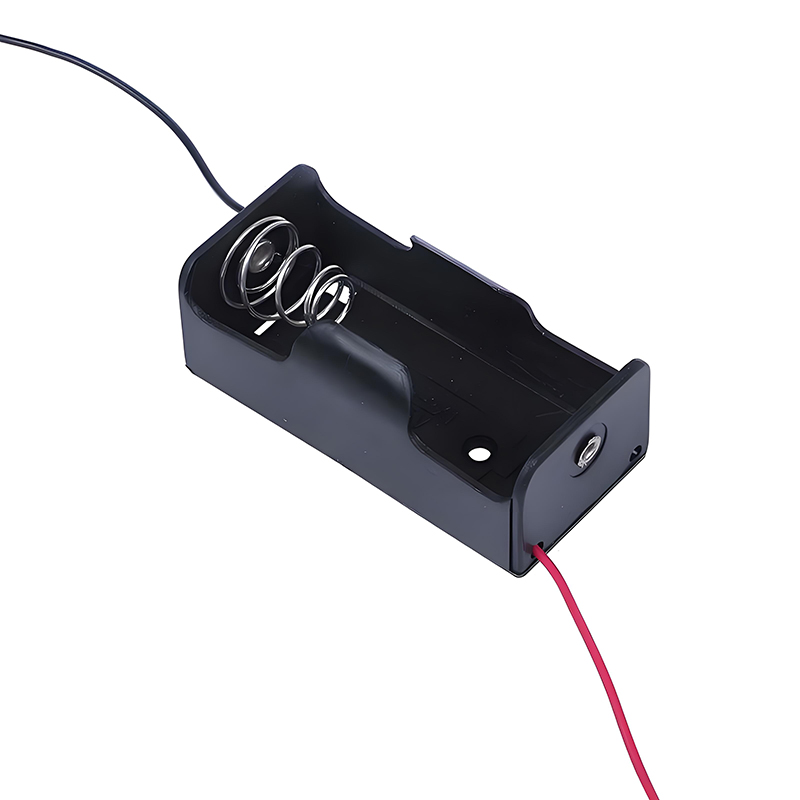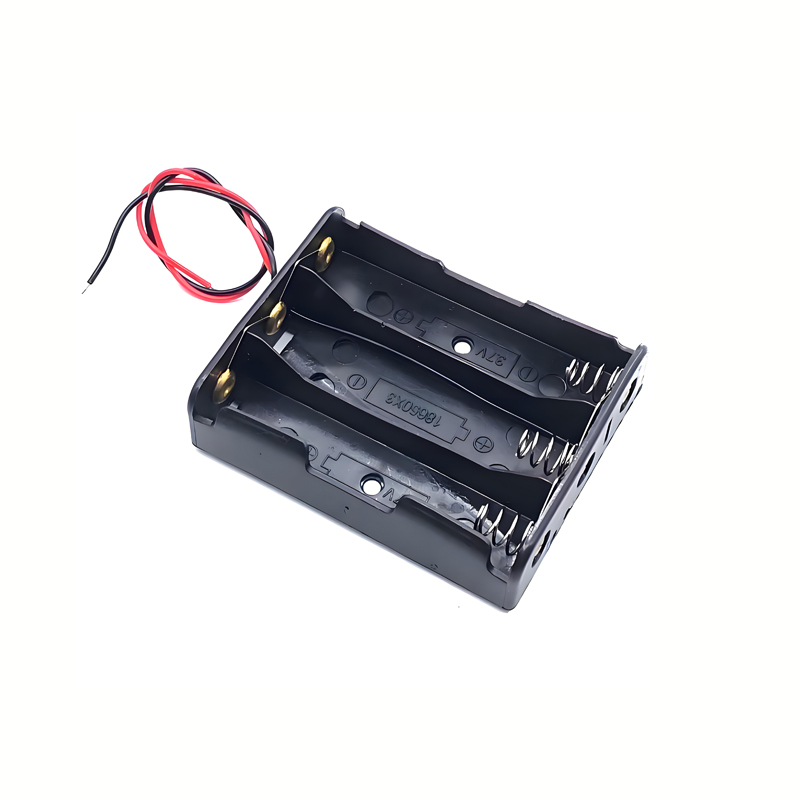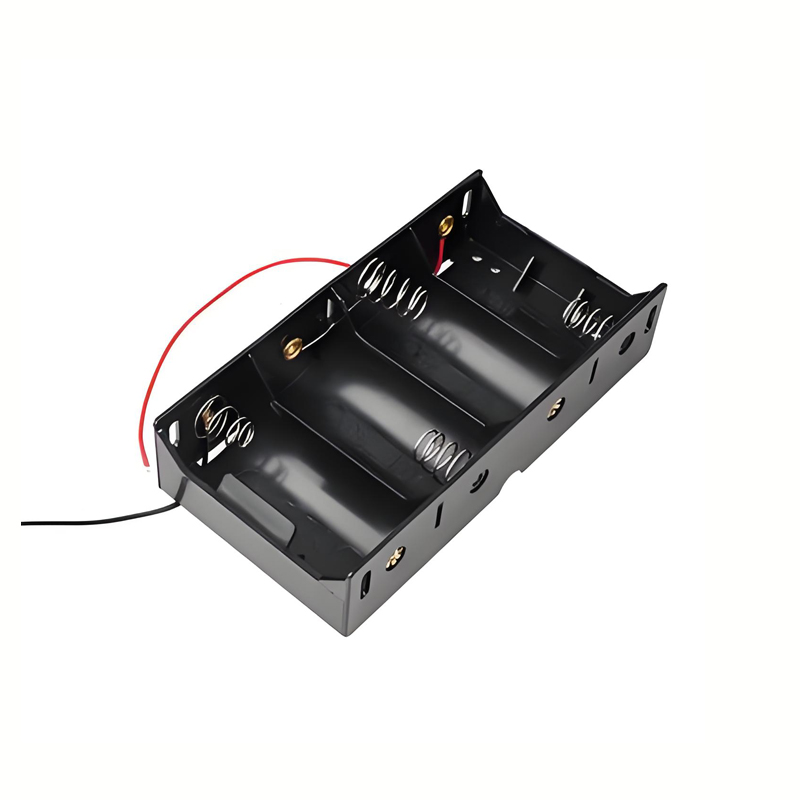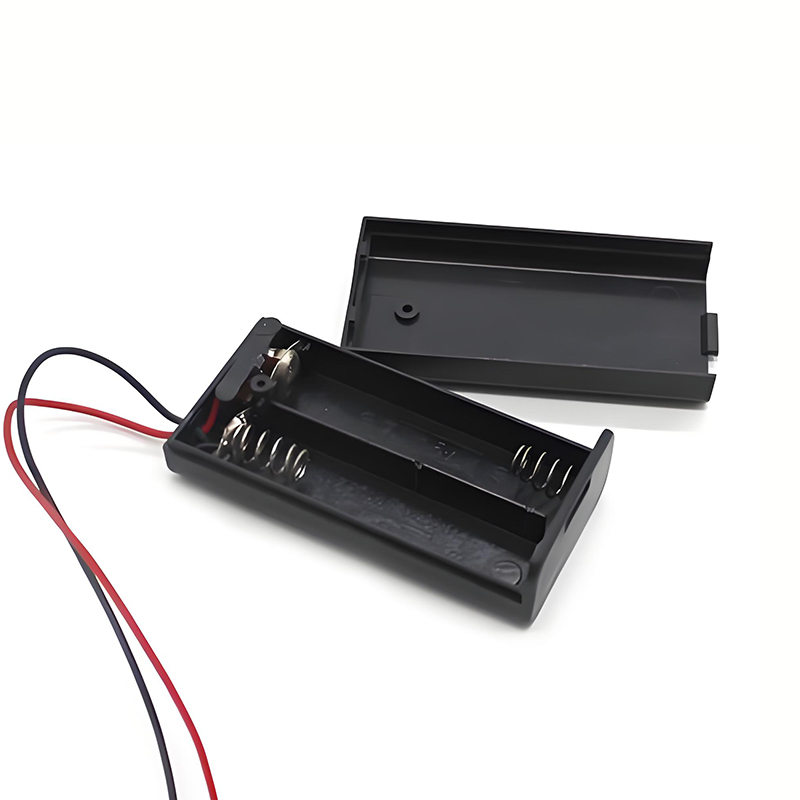



Toy Single Double Quad Battery Pack
Parameters of Battery Boxes
The performance and suitability of a battery box is usually determined by the following parameters:
Battery type:
Common battery types include AA, AAA, C, D, 9V, button cell and so on.
Battery packs need to choose the right battery type according to the equipment requirements.
Battery capacity:
The number of batteries that the battery box can hold (e.g., single, double, four, etc.).
The larger the capacity, the longer the device’s range usually is.
Voltage:
The output voltage of the battery pack depends on the type and number of batteries (e.g., 3V for two AA batteries).
The voltage required by the device usually matches the output voltage of the battery pack.
Size:
The size of the battery box needs to match the internal space of the device to ensure easy installation.
Dimensional parameters are usually expressed in length x width x height (mm).
Material:
Common battery box materials include plastic, metal and so on.
Plastic is lightweight and has good insulation, while metal is more durable.
Contact resistance:
The conductive structure inside the battery box needs to ensure low contact resistance to minimize energy loss.
Contact resistance is usually measured in milliohms (mΩ).
Self-discharge rate:
The insulation of the battery box affects the self-discharge rate of the battery, and good insulation design can reduce the natural loss of battery power.
Self-discharge rate is usually expressed as a percentage (%).
Durability:
The durability of a battery case determines its service life and is usually measured by the number of times it is opened and closed or the time it is used.
